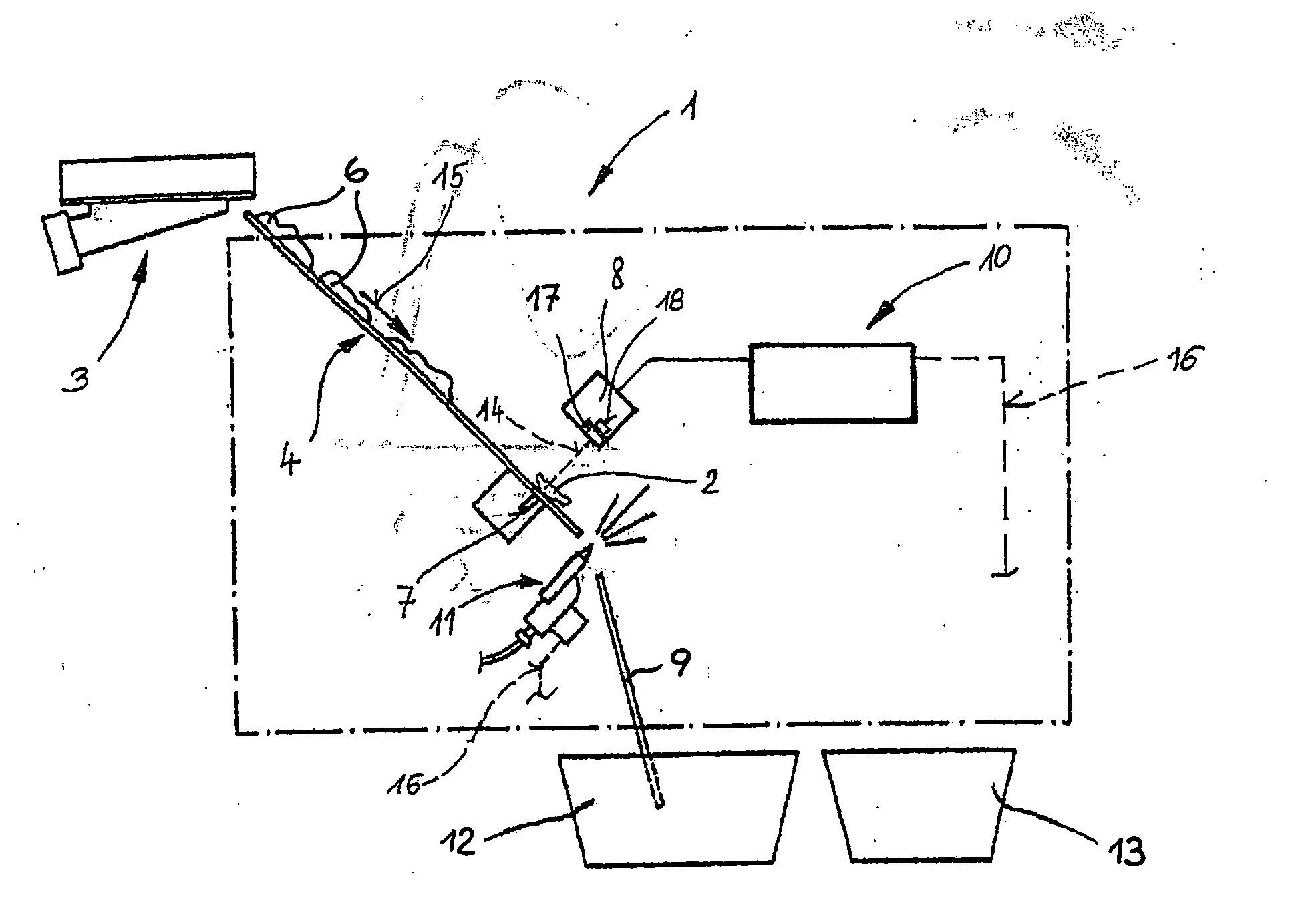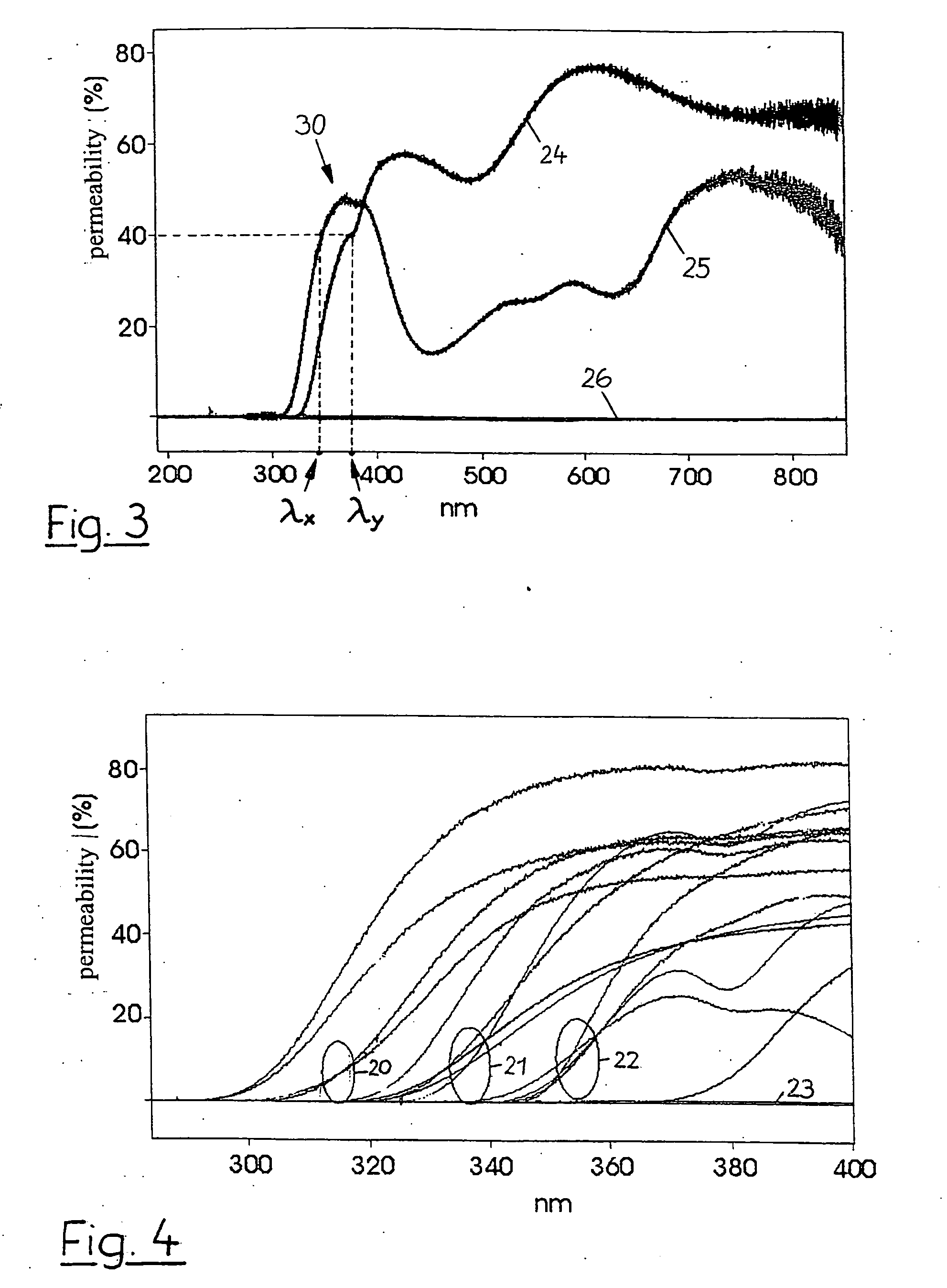Method for detecting and sorting glass
a technology of glass and detecting method, applied in the direction of sorting, color/spectral property measurement, etc., can solve the problems of product flaws, inability to recognize, and disturb the production process, and achieve the effect of reliable and cost-efficient recognition
- Summary
- Abstract
- Description
- Claims
- Application Information
AI Technical Summary
Benefits of technology
Problems solved by technology
Method used
Image
Examples
Embodiment Construction
[0037]FIG. 1 shows a line with a sorting chute 1 according to a method of detecting special glass, wherein this sorting chute comprises a feeder groove 3, a material chute 4, a UV radiation source 7 of the invention, a detector unit 8 together with an evaluation and control unit 10 and blowing nozzles 11 which are actuatable by means of a valve control 16, as well as at least two containers 12 and 13. A scrap glass stream 6 consisting for its major part of broken glass is automatedly forwarded in the direction of movement 15 from the feeder groove 3 through the material chute 4 into the detection range of the detector unit 8. A single piece of broken glass 2 is shown by way of example in this detection range. Depending on the classification performed by the evaluation and control unit 10 that will be described in greater detail herein after, the piece of broken glass 2 will either free-fall naturally into the container 12 of the piece fraction or be diverted during free fall by mean...
PUM
 Login to View More
Login to View More Abstract
Description
Claims
Application Information
 Login to View More
Login to View More - R&D
- Intellectual Property
- Life Sciences
- Materials
- Tech Scout
- Unparalleled Data Quality
- Higher Quality Content
- 60% Fewer Hallucinations
Browse by: Latest US Patents, China's latest patents, Technical Efficacy Thesaurus, Application Domain, Technology Topic, Popular Technical Reports.
© 2025 PatSnap. All rights reserved.Legal|Privacy policy|Modern Slavery Act Transparency Statement|Sitemap|About US| Contact US: help@patsnap.com



